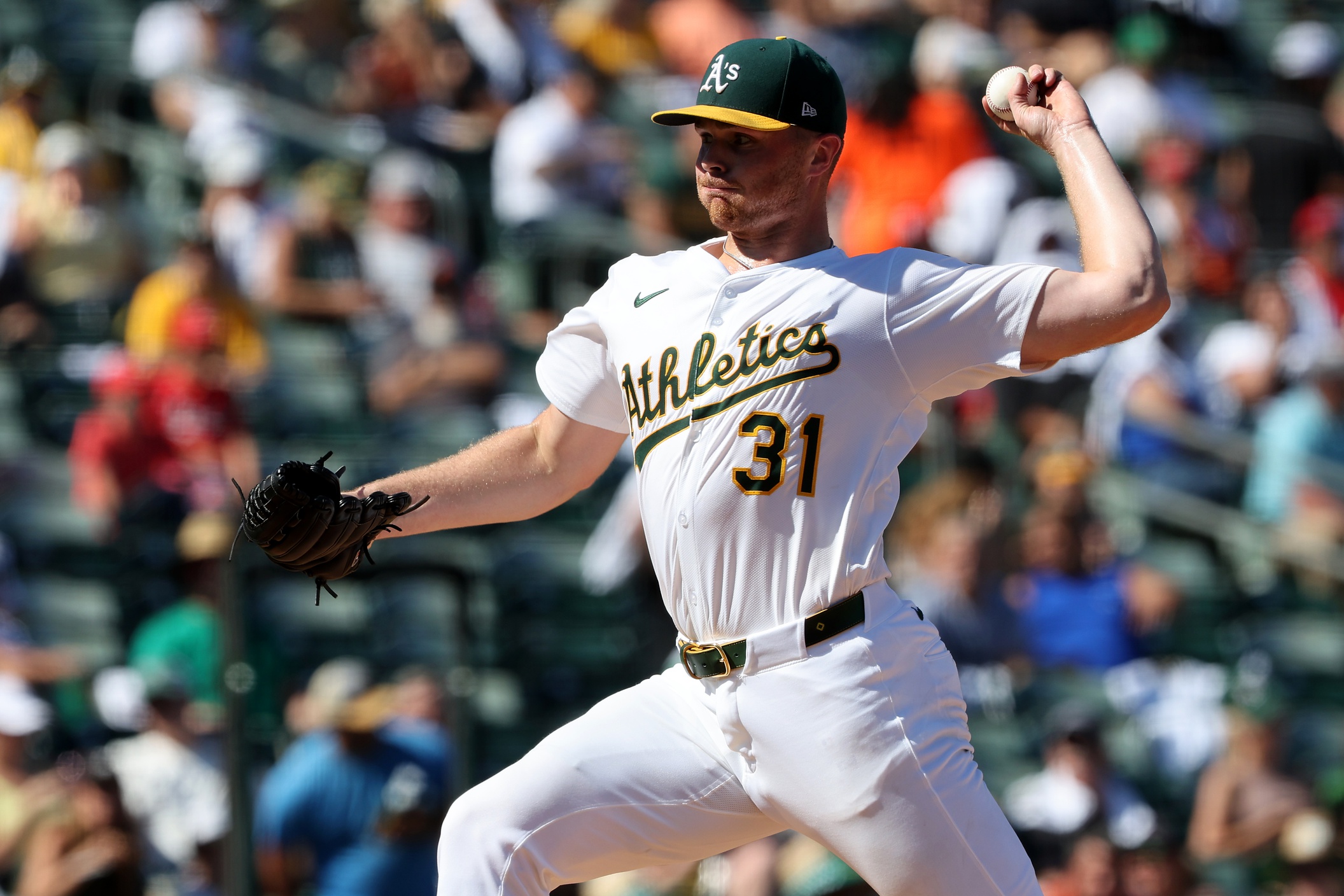Tied at 2 and heading into the bottom of the ninth inning Thursday afternoon, the White Sox had an opportunity to steal a win and series in walk-off fashion. Tim Anderson came to the plate first and led off with a routine grounder to Nicky Lopez at short, but Lopez's throw failed to qualify as such. It was high and toward home plate, causing Carlos Santana to leap for the throw as Anderson attempted to duck under him.
Santana saved the play, slapping the tag on Anderson's hip before Anderson's foot hit the bag. The replay showed that Anderson could have reached had he been running hard from the get-go, but he took his time getting going.

The White Sox went on to lose 5-2 in 10 innings for their ninth loss in 10 games. It's the kind of play where Tony La Russa had the option of chewing him out, but he regarded the effort level as conscious conservation.
Neither the visuals nor the reaction satisfy, but after three injuries near first base, we can at least comprehend the risk of running too hard. Among the numerous frustrating elements of the White Sox's 1-9 slump is the general sense that every effort and intention is misplaced.
When Eloy Jiménez and his sore ankle took it easy on a grounder to the left side on April 22, he didn't realize the ball had a stopover at second base before the out at first. Had he hustled, he would have extended the inning.
A day later, Jiménez hit a chopper to the left side, this time soft enough to smell a hit. He ran down the line at 110 percent, and that extra 10 percent carried him to the back of the bag instead of the front of it. The awkward landing resulted in a hamstring tear that will keep him out of action for six to eight weeks.
Oh, and he was out.
The White Sox are damned if they do, damned if they don't, and not just when they have to balance the sudden danger of running hard to first base with the chance of stealing a hit in high-leverage situations.
Jake Burger hits a fly ball Statcast with an exit velocity, launch angle and direction that would send it out in every MLB park, and yet at Guaranteed Rate Field on Tuesday night, it loses 30 feet of carry.
Aaron Bummer gets a pair of grounders for a double play and a scoreless ninth inning when Kendall Graveman and Liam Hendriks are unavailable, and his reward is a 10th that exposes his ongoing control problems to their breaking point, so he gets saddled with the loss instead. The road to hell is supposedly paved with good intentions, yet the White Sox aren't even getting warmth out of the deal.
It's such a spectacular run of bad timing that luck eventually has to turn in their favor, and it'd probably be easier to believe if the 2021 Minnesota Twins didn't just serve as a living-yet-pulseless example that sometimes regression never comes.
The question is how quickly they can recover from some maladies that are targeted for outsized impact, such as:
The candidates for biggest in-house improvement have all been hurt: A full season of Luis Robert is still possible, but everybody gets to develop a healthy fear of life without him. Eloy Jiménez made enough loud contact to tempt before he disappeared. AJ Pollock fails to resemble an upgrade in right field when he goes two weeks without playing, and every one of Yoán Moncada's on-field winces is going to stoke fear of a lowered ceiling on his production.
Aaron Bummer is struggling after Garrett Crochet got hurt: The White Sox could absorb the loss of one of their MLB lefties, but not when the other abruptly lost his trustworthiness. It hurts double when Liam Hendriks is dealing with a back issue, as Bummer was also supposed to supply a general high-leverage option regardless of handedness.
Terrible defense behind the starter who most needs support: The command Dallas Keuchel has displayed suggests he'll be hard-pressed to last the half, but if he's going to have starts that teeter on the brink, it'd at least be educational if he let everybody down by himself. Right now, he's getting the kind of support that would render even a 2020 Keuchel mediocre.
As long as these elements are present, what's left is a lineup where Anderson is the only good player who isn't station-to-station, and his effect is muted when he has his own concerns about going full throttle during a time when first base has already injured a few of his teammates, and he's playing six-errors-over-three-games kind of defense. The Sox still might be able to absorb that with the kind of power that's still on hand, except MLB decided to store the baseballs in Lake Michigan this year. What's left is steady pressure through plate discipline, and they're going the wrong direction there.
The White Sox are fighting the bases. The White Sox are fighting the balls. When the issues are that fundamental, it really doesn't matter who the opponent is.






